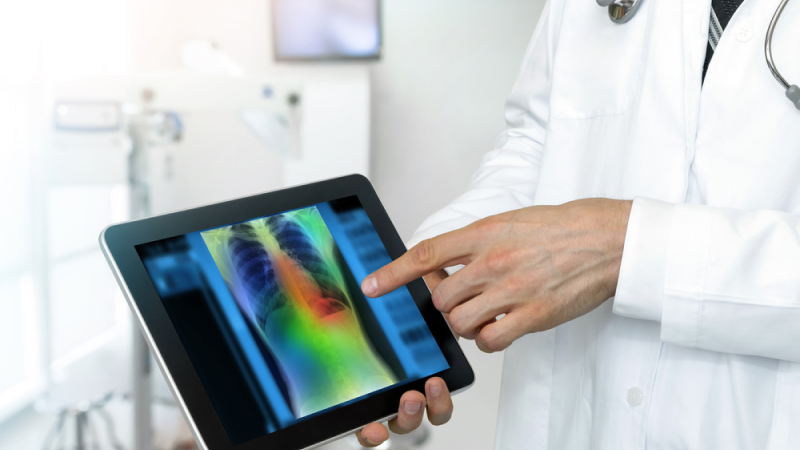
The COVID-19 pandemic has boosted many technological trends, namely those focused on distant medical care, early diagnosis, and higher security for both doctors and patients. The expansion of some of these trends like telemedicine, Artificial Intelligence, and cloud computing is unprecedented and will cause permanent change both in the healthcare sector and in our lives.
Before we get to the top-3 trends that will affect the medical sector in 2021, here are some honorable mentions:
AR/VR
Augmented and virtual reality for the healthcare and medical sector works in three directions:
- It adds to the mass medical learning and helps students to visualize body mapping and go through surgical training.
- These technology-based solutions improve robotic surgeries and help doctors conduct complex operative interventions.
- AR and VR-based technologies are used directly by patients. Specific programs can reduce the stress level and be a significant part of physical therapy.
3D bioprinting
According to some predictions, during the next five years, the market for three-dimensional bioprinting is about to become four times larger. This trend can be is easily explained by the numerous benefits the technology brings to the healthcare sector.
Nanomedicine
Being the medical use of nanotechnology, the nanomedicine market is expected to grow from $149 billion in 2019 to $387 billion in 2027. Nanomedicine is used in diagnosis, vaccine development, and cell biology, finding applications in all spheres of medical care, starting from infectious diseases and up to oncology.
There are three more trends which have started to grow several years ago. Today they influence the whole IT sphere and will surely stay with us during the next decades.
Telemedicine and the Internet of Medical Things
According to McKinsey research, the telemedicine trend has burst during the pandemic but as it has revealed its multiple benefits to both patients and doctors, it won’t stop growing. In terms of money, the telemedicine market that was equal to $45.5 million in 2019 will seize $175.5 million by 2026.
To get a share in this highly-competitive market, new companies have to take enormous care of their customers’ experience with their software and wearables. Patients should be comfortable with telehealth solutions, which means that both wearable devices and telemedicine apps should not only be a part of the remote health monitoring and virtual care but also be secure and easy to use.
If you’re about to develop your own medical app or software that will connect clinics, health providers, and patient, thinks of the main functions and features your SaMD or application should include:
- It must be secure for the user and comply with data protection, medical security, and HIPPA regulations.
- It has to identify the location of a patient. This option will be particularly demanded during the vaccinations so that the health providers can track patients.
- It should make the appointment management easier, for example, with the help of video and audio communication and messaging.
- It has to track healthcare provider reviews and the patient visit history.
- It should store wireless history through wearable integration.
If it seems too much and you don’t know where to start from when working on your medical startup, ask for help from experts in developing medical software.
Artificial Intelligence
The AI software market is about to grow from $10.1 billion in 2018 to $126 billion in 2025. AI solutions have demonstrated their efficiency during the COVID-19 outbreak. For example, the Canadian Bluedot company that scans media in more than 60 languages, was the first to write a scientific paper on the virus risk by analyzing data and predicting future outbreaks in a real-time manner.
AI technology can also help the healthcare system by scanning many individuals at once in order to identify those who can have COVID symptoms. Thanks to machine learning, AI software can analyze the increasing data flow, improving the precision, efficiency, and speed of diagnoses.
AI-driven analytics also add to early treatment. Smart chatbots already help patients with self-diagnosis and although they cannot fully substitute doctors yet, they surely assist during the diagnostics. AI will be necessary with the Internet of Medical Things growth: technology is expected to improve the analysis of data received from multiple wearables.
The influence of AI adoption on the labor market is also immense. Analytical companies anticipate the reduction of job offers connected with monotonous tasks in healthcare and the simultaneous growth of the demand for unique specialists with expertise in providing high-tech services.
Cloud computing and security
The expected growth of cloud computing is profound: from $20 billion in 2017 to $35 billion in 2022. This is easily explained by the multiple benefits the technology has for the healthcare sector. Cloud does not only reduce the physical infrastructure, it also safeguards information and increases the speed of data operation. It facilitates better collaboration between patients, doctors, databases, wearables, and other SaMD, as storing data on the cloud makes it easily accessible.
The cloud keeps electronic health records, providing encryption of data and its higher security. Real-time data processing and the possibility to make backups on the Cloud are also highly valued by healthcare providers. Remote monitoring, simplified data management, and higher clarity of data-storage regulations are the main advantages of applying Cloud. However, to enjoy these benefits, healthcare companies have to look for reliable IT specialists able to manage HIPPA-compliant cloud infrastructure.
